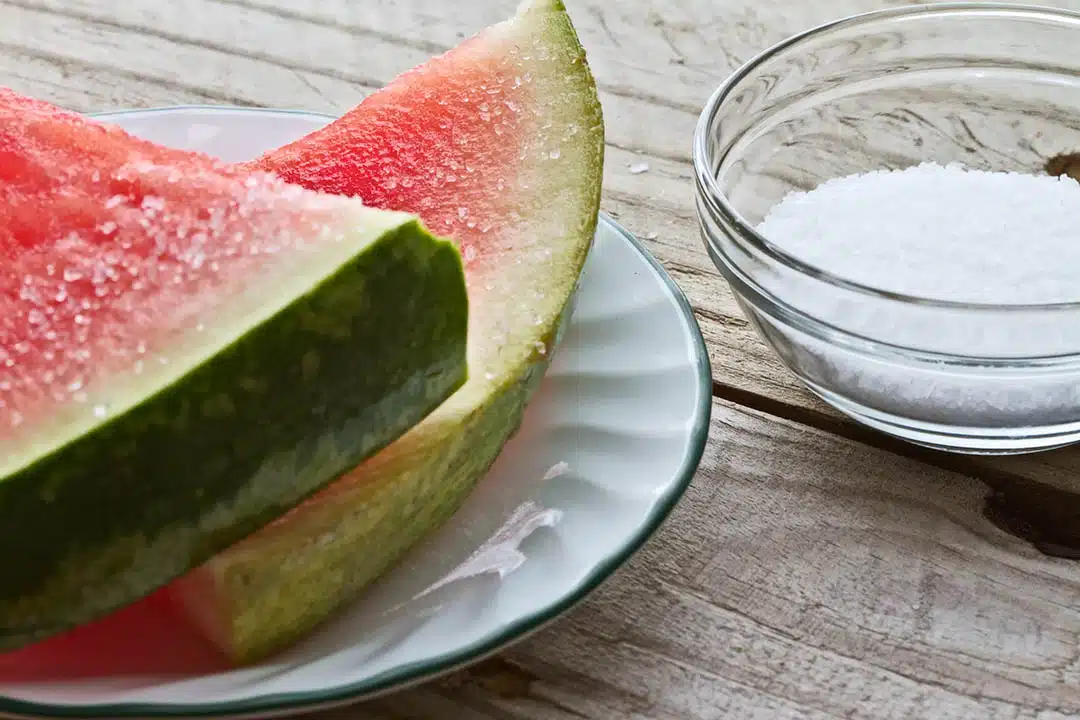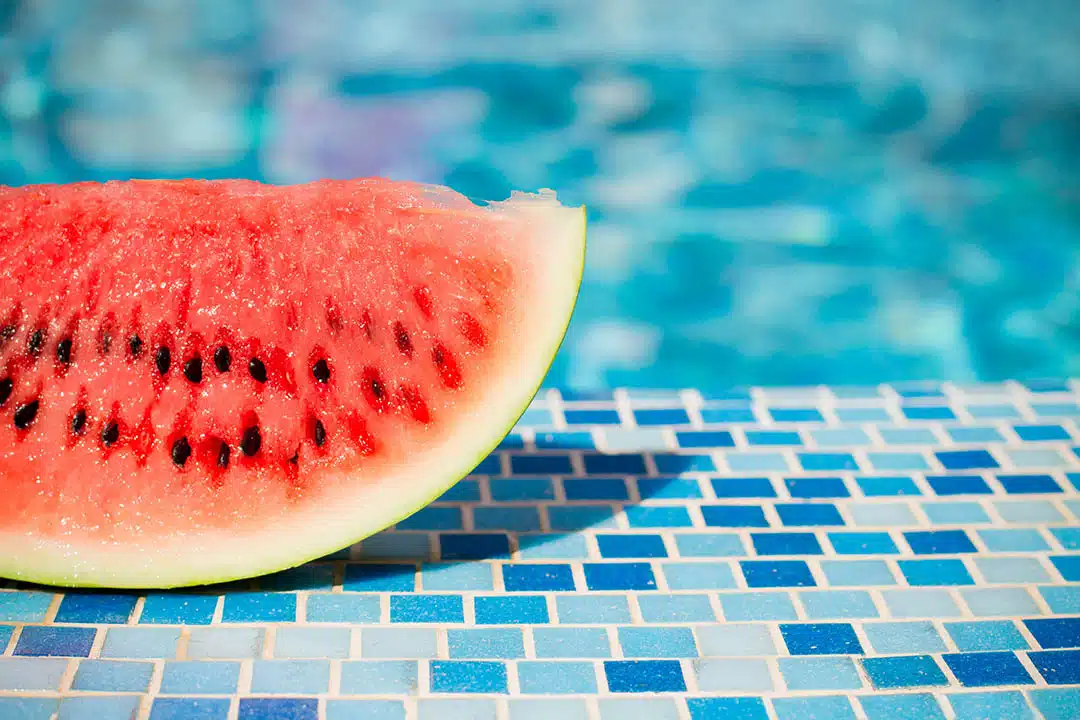
The glycemic index (GI) of watermelon varies between 72 and 80 , depending on the variety, which places it among the fruits with a high GI . For comparison: an apple has a GI of 38, a strawberry 41, and white sugar, around 65.
Concretely? A 150g portion of watermelon eaten on an empty stomach can cause a greater rise in blood sugar than 50g of pure sugar . And a rapid spike also means a sudden drop afterwards, resulting in fatigue, hunger pangs, and sugar cravings… The famous « yo-yo effect » that we could do without.
How to enjoy it without ruining your blood sugar

Watermelon isn’t your enemy. But like all foods high in fast-acting sugars, it requires a bit of strategy. Here’s how to incorporate it into your diet without upsetting your blood sugar levels:
- Avoid consuming it on an empty stomach : an empty stomach accentuates the “express peak” effect.
- Combine it with a source of protein or good fats : plain yogurt, a few almonds, a spoonful of cottage cheese.
- Stay moderate : 100 to 150 g is more than enough to refresh yourself without excess.
- Choose watermelon at the end of a meal , not as a standalone snack.
- Alternate with low GI fruits : kiwi, apple, raspberry, orange, etc. to vary the pleasures gently.
What to remember
Watermelon isn’t a bad idea—far from it! But it should be enjoyed in moderation and with care , especially if you’re monitoring your blood sugar or experience a post-meal energy dip . Because yes, a fruit can be hydrating while also causing a roller coaster effect in your body.
Refreshing, tasty… but to be enjoyed intelligently : watermelon is a summer pleasure to be consumed in moderation , not in all-you-can-eat buffet mode .
